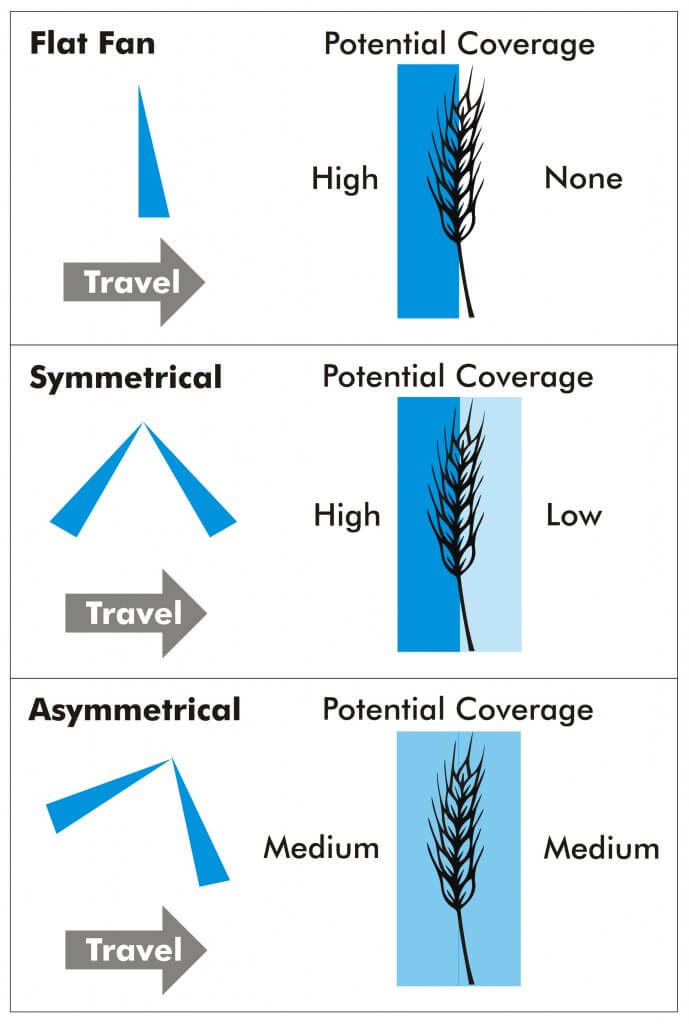Wondering which (if any) dual fan nozzle to buy?
- Symmetrical?
- Alternating floods?
- Asymmetrical?
Well, first, understand they are intended for vertical targets, like wheat heads.
Here’s a diagram of how they are (ideally) supposed to work:

Here’s our very own @Nozzle_Guy, Dr. Tom Wolf to tell you all about them.
Now understand they don’t seem improve matters (at conventional pressures) in broad leaf crops. We compared spray coverage from several nozzles in soybean. The lack of any clear cut winner was disheartening, but even messy results can lead to valuable conclusions! Read more about the experiment here and watch the video below:
And finally, understand that choosing a brand or variation of a dual fan nozzle arrangement is likely the least important factor. It falls, in our opinion, last in this sequence of factors:
- Spray timing (i.e. crop stage, pest stage)
- Product choice
- Boom height (Keep ’em low)
- Droplet size (Keep ’em Coarse or larger)
- Spray volume (Go with more gallons per acre, not less)
- Style/brand of dual fan nozzle